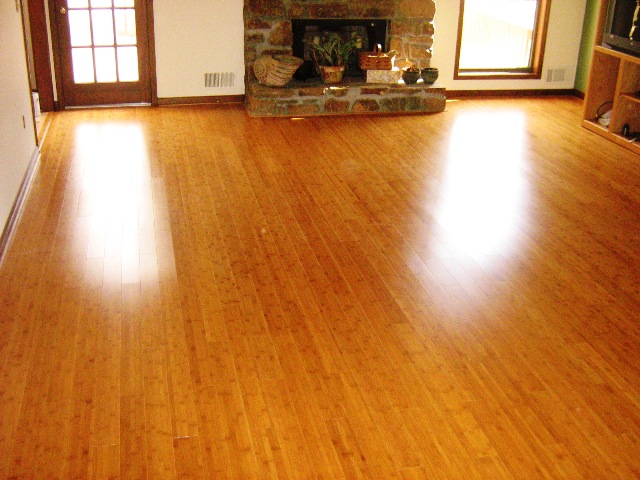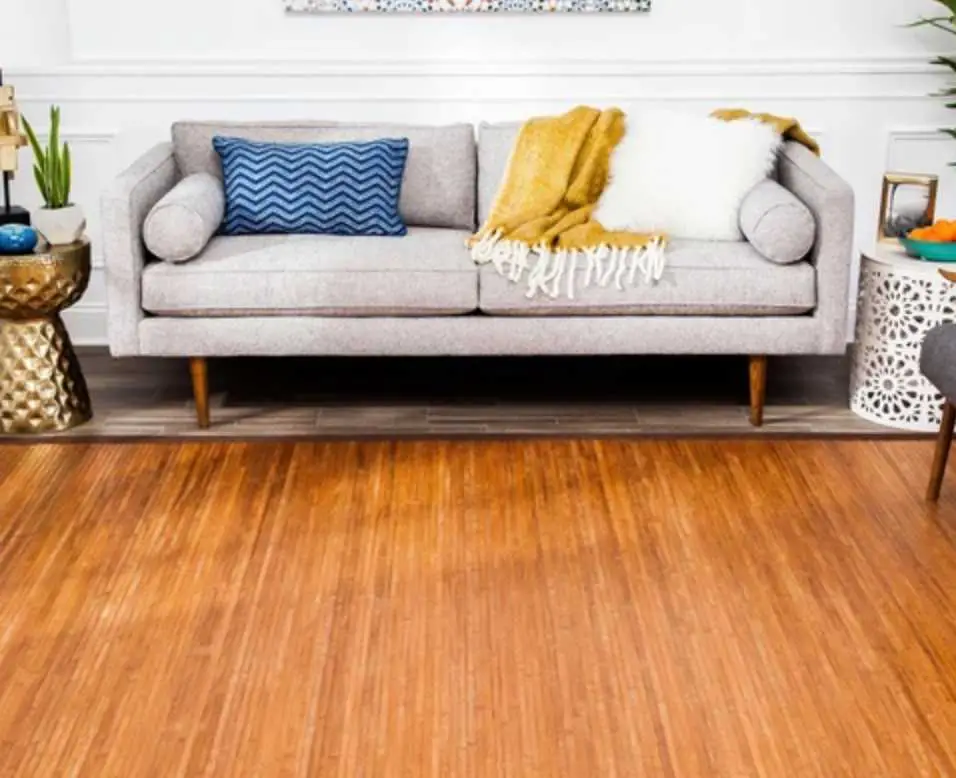Everything you Need to Know regarding Bamboo Flooring
Everything you Need to Know regarding Bamboo Flooring
Blog Article
On this page down the page you'll find a bunch of outstanding content in relation to What to Know About Bamboo Flooring Before You Install.
Bamboo flooring is well-known for lots of house owners due to its advantages. It has ended up being the major choiced floor for company and homeowners whenever there is need for sustainability.
However, bamboo just like timber, is prone to dents and cracking when moisture levels fluctuate.
Are you believing about bamboo flooring for your residence? Then, matter yourself fortunate because this write-up will reveal you everything you need to recognize. We will discuss its features to take into consideration. We will certainly likewise discuss the different types of bamboo flooring available on the market. Keep reading!
Kinds Of Bamboo Flooring
There are three basic alternatives: strand-woven, vertical, and also horizontal. Property owners can choose which sort of bamboo flooring to get based upon their traits. Additionally, the buyer's desired visual influences the selected Bamboo flooring type.
Engineered Bamboo Flooring
Both strong and also engineered bamboo flooring options are readily available. When the bamboo timber fits, it isn't simple to distinguish between them.
But their distinctions are because of their making. For instance, crafted bamboo wood has a slim plywood support.
But, whether crafted or solid, bamboo flooring is strong, resilient, and also appealing.
Engineered bamboo flooring utilizes the drifting wood floor over a slim foam base. They might additionally remain in the kind of wide planks. They are readily available in widths up to 19 centimeters.
Solid - Straight Bamboo Flooring
You will observe that this type is virtually the same as vertical bamboo flooring. But it has a small variation. Horizontal bamboo is one of one of the most preferred kinds of bamboo flooring.
It is made by drying massive strips of bamboo, cutting these larger items into thinner strips, and then gluing them to develop planks. The boards will after that go through stress as well as warm to guarantee they are well fastened.
Natural bamboo has a lighter color. Hence, the strips are frequently discolored. While carbonized bamboo will certainly be much less difficult than normal bamboo, if you need a darker color, it may do you good. It likewise gives the natural bamboo looks as well as a selection of options.
Strand Woven Bamboo Flooring
Shredding the bamboo to draw out the fibers is among the much more luring action in producing strand-woven bamboo floors.
The bamboo fiber is often combined with a glue after it's made to a pulp. The product is then knitted as well as pressed together under terrific warm, as the name recommends.
After making upright as well as horizontal bamboo, the strips serve to create strand woven bamboo. The eco-conscious customer might discover this feature appealing. The factor is that it makes certain that the entire bamboo stalk generates extremely little waste.
Solid - Vertical Bamboo Flooring
Thin strips of dry bamboo timber glued up and down and also pressed making use of high warm and pressure create this type of bamboo flooring.
The thinnest side of the bamboo planks will certainly remain in a vertical form. Then, a company bonding, pressing, and also lamination will adhere to. Because of their method of signing up with, the bamboo strips feature a narrow grain pattern.
The good idea about this type of bamboo flooring is that it is durable and also very economical. It offers a classy and also classy flooring surface. It is not extensively offered.
Functions And Also What to Keep in Mind When Picking Bamboo Flooring
With a multi-layered layer, bamboo flooring will be rather resilient. Yet bear in mind that future touch-ups could require an extra proficient flooring professional.
Also, applying your coating will certainly make matching repair services easier when established in your house. However the coating will not last as long as manufacturing facility finishes.
Apart from that, right here are some interesting functions of bamboo flooring.
Eco-Conscious
This flooring originates from an all-natural plant called the bamboo plant. When contrasted to various other tree types utilized to make wood flooring, bamboo expands more and quicker.
Economical Maintenance
You can maintain bamboo flooring in good condition by cleansing as well as damp mopping. So regardless of being extra susceptible to scrapes, bamboo flooring is extremely straightforward to preserve.
You may get bamboo floorings that are as good as brand-new by sanding them down and applying a fresh layer of paint.
Sturdy
Bamboo flooring is not created equivalent. There are numerous kinds of bamboo, and also the various techniques utilized to turn it into slabs influence its durability.
Bamboo, like hardwood flooring, can end up being vulnerable to wear and also tear over time. Also, scratching, breaking, and other wear and tear may occur. You can also sand some bamboo to appear like hardwood, yet not all.
Bottom Line
It's simple to recognize why bamboo flooring has come to be a lot more well-liked nowadays. For nearly any home, bamboo provides numerous strong and audio services for the atmosphere. Bamboo floor might be the ideal option for updating your flooring.
We will certainly likewise talk about the different kinds of bamboo flooring offered on the market. Property owners can choose which kind of bamboo flooring to buy based on their characteristics. Horizontal bamboo is one of the most preferred kinds of bamboo flooring.
While carbonized bamboo will be much less difficult than normal bamboo, if you need a darker color, it might do you great. After making vertical as well as straight bamboo, the strips serve to develop strand woven bamboo.
Bamboo Flooring
Manufacture of Bamboo Flooring
Stranded bamboo is made by shredding the bamboo stalks into small strands, which are compressed into sheets using heat and resin binders, then cut into planks to use as building materials. This form of flooring is available both as tongue-and-groove planks that are nailed down, as well as planks that float over the underlayment. This is a premium form of bamboo flooring, available in many colors.
Horizontal bamboo flooring is manufactured by cutting the strands into thin strips which are then glued together to form planks. This type of flooring has a "grain," since the long stalk fibers are visible in the flooring. This type of bamboo is not as hard or durable as stranded bamboo, but it can have a very striking appearance. It, too, is available both in nail-down planks and as floating floor planks.
Engineered bamboo flooring is made by bonding a thin layer of bamboo onto a plywood or MDF core. This flooring is comparable to engineered hardwood and is installed in the same way—usually with click-lock planks that float over a foam underlayment. It is the least expensive (and least durable) form of bamboo flooring, and it cannot be refinished.
Unless it is stained, most bamboo flooring has a natural blonde or amber color that resembles unfinished maple or birch, but darker tones are available through a process called carbonizing, which entails subjecting the planks to high temperatures. While the color can be very attractive, carbonized bamboo is softer than uncarbonized forms, and is more susceptible to scratching.
Eco-Friendliness
Environmentally conscious consumers are often drawn to bamboo as a wholly renewable resource. Unlike the hardwood lumber industry, where trees can take decades to mature, bamboo stalks grow so fast that there is little environmental liability to the harvest practices. Moreover, bamboo stalks that are cut simply continue to grow and replenish themselves so that they can be harvested.
But the manufacturing process creates other environmental concerns. Bamboo floor planks are manufactured by slicing or shredding the stalks of bamboo grass plants and then compressing the pulp back together using heat, pressure, and a resin-based adhesive identical to those used in many other flooring products. This adhesive often contains urea-formaldehyde that can outgas into the air.1
The level of adhesive used and the amount of toxins emitted will vary, depending on how the bamboo planks are manufactured. Cheaper products may contain more formaldehyde, while more expensive products may use alternative materials in the resins. The amount of formaldehyde used in bamboo flooring is similar to that found in engineered hardwood flooring or MDF sheathing, and it tends to be a problem only for sensitive individuals.2 But if this concerns you, look for bamboo products labeled as formaldehyde-free.
Bamboo Flooring Cost
This material is priced at about the same level as most hardwood floors. You can find bamboo flooring products ranging from about $2 to $8 per square foot, with a national average of $3.84 per square foot. Installation costs for bamboo flooring are much the same as for hardwood flooring. On average, figure on adding about $4 per square foot for installation labor in addition to the cost of materials. You should be able to get a good-quality bamboo installed for less than $10 per square foot, including materials and labor.
https://www.thespruce.com/benefits-and-drawbacks-of-bamboo-floors-1314694

Do you really like reading up on Bamboo Flooring? Post a remark directly below. We'd be interested to know your ideas about this posting. We hope that you come back again later on. Sharing is good. Helping others is fun. I am grateful for your time. Visit again soon. Report this page